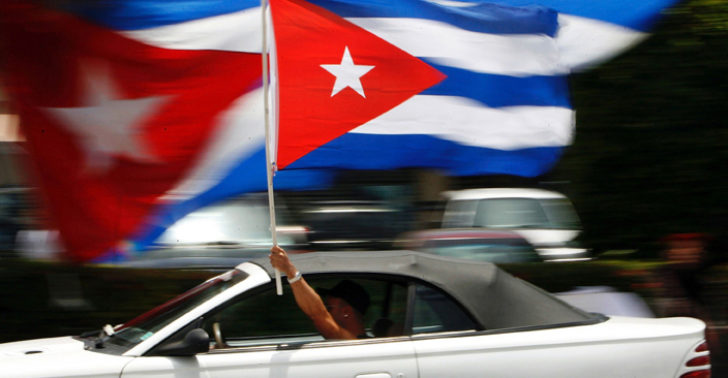
The problem of ‘Cubanness’
HAVANA — The formation of national identity is a long and complex historical process where — in culture and perhaps only in culture — a certain degree of unity takes place among people of diverse social origins and different life experiences.
In reality, many cultures coexist or struggle within a nation, so the national identity gels on the basis of establishing common factors that distinguish those people from the rest of the world’s inhabitants.
Through one of those mysteries of human nature, the national identity acts as a genetic imprint that singles out a group of persons and accompanies them inevitably for the rest of their lives. That imprint is passed down, with greater or lesser intensity, to their descendants, even when they live outside their countries of origin.
Culture constitutes one of the fundamental battlefields in national struggles, inasmuch as it defines the social subject that must carry them out and the political contradictions implicit in this process.
Cuba is a good example of this. Despite the great diversity of its components, the road to a national identity (defined as “Cubanness”) has been marked by a tendency to the consolidation of some very homogeneous cultural expressions, as compared with national projects that are not only diverse but on occasion antagonistic.
Although the swift extinction or assimilation of the aboriginal cultures limited the ethnic differences and their island-bound condition limited the territorial problems present in other peoples of the Americas, the Cuban nationality had to find its way by confronting colonialism, slavery and annexationism.
This identity, based on independence, preceded the Republic and became a very powerful feeling, even if the achievements were far from defining the homeland “with everyone and for the good of everyone” that José Martí had dreamed of.
The cultural influence of the United States was present since the earliest moments of the formation of the Cuban nationality and became a hegemonic resource for the neocolonial model implanted in the country beginning in 1902.
As a result of this, the triumph of the Cuban Revolution in 1959 also constituted a confrontation on the cultural stage, something that had repercussions in the very interpretation of the concept of nationality.
The application of an “exclusive nationalism” by the revolutionary side (as defined by Cuban intellectual Ambrosio Fornet), or the accusation that Cuba had become a Soviet satellite (a charge made by the revolution’s opponents) defined the extremes that questioned the nationality of either party during the most heated moments of the confrontation.
In particular, the émigrés were victims of this differentiation. Those who emigrated immediately ceased to be considered Cuban and, to a great degree, the revolutionary political discourse was articulated on the basis of this stipulation. The ideology of the counter-revolution also contributed to this perception, due to its organic link with the United States, its promotion of anti-Cuban projects that included a military invasion of the island, and a contempt for a popular culture that the counter-revolution did not identify with as its own.
The emergence of the Cuban-American — the result of the integration of Cuban émigrés to U.S. society — complicated matters further. To some, it simply was a confirmation that they had ceased to be Cubans, but in fact it was a much more complex process: the emergence of a Cuban cultural identity that expressed itself in a different national environment.
It seemed that we were in the presence of two Cuban cultures separated by politics, but Fidel Castro, the most radical of all Cuban revolutionaries, took on the task of rectifying concepts, clarifying problems and establishing standards for their analysis. As early as 1978, Fidel told a group of U.S. journalists visiting Cuba:
“The Cuban community, like all other communities that live in another milieu — another national milieu, let us say — tries to maintain its national identity. […] It matters not what they are, whether a Cuban millionaire who emigrated or a Cuban laborer who emigrated […] this is not a question of class, it’s a problem of a national nature […] And that, logically, awakens our solidarity. […] It matters not that they don’t sympathize with the Revolution, but we are satisfied to know […] that the Cuban community tries to maintain its language, its customs, its Cuban national identity.”
Spoken some months before a summons to “a dialogue with figures that represent the Cuban community abroad,” some of whom had heatedly fought the Revolution, Fidel’s words were a turning point in Cuba’s migratory policy. Surely, Fidel was not unaware of the political importance for the future of the Cuban nation of nurturing this national feeling.
Such an appreciation is much more current now that the transformations in the diaspora feed — in a natural way — the reaffirmation of Cuba’s national identity overseas.
Firstly, because it is a need of the Cuban-Americans — within the multi-ethnic context imposed by U.S. society — that fuels their interest in establishing links with their native country. But also because there has been a change in Cuban society’s appreciation of the diaspora and the political conditions that determined relations between both sides.
The conditions are given for “Cubanness” to once again overcome other differences, including among people who, for one reason or another, acquire another nationality or are descendants of Cubans born in other countries.
And that has a strategic importance for Cuba, not only in the political and economic planes, but also on the cultural level, because of all that it can contribute to its enrichment.
As the wise Fernando Ortiz said: “He who wants to be Cuban is Cuban.” And, for the good of Cuba, we should all encourage the shared pride of being Cuban.

